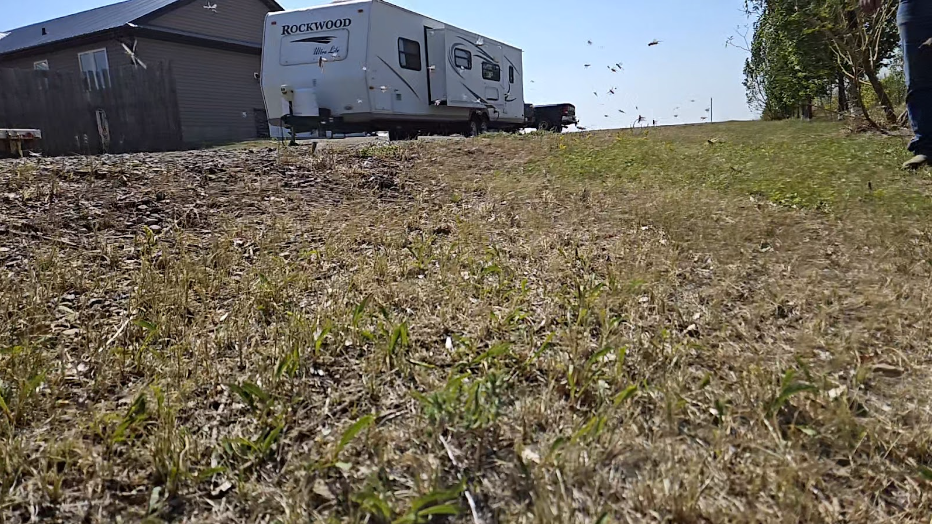It’s dry in southern Alberta. But you don’t need to tell area farmers that.
As of August 3, 15 Alberta communities have declared agricultural emergencies this summer. Alberta government data shows some areas have received 50-year-low levels of precipitation.
On Cactus Coulee Ranch just east of Redcliff in Cypress County, Shane Hok is already well aware, seeing as the majority of feed for his 300 cattle have come via his wallet instead of bis dry, barren pasture and feed fields.
“We had a good start in the spring with some snow cover. We did have runoff. But now it’s drying up,” said Hok, who estimated his ranch had received less than 25 mm of rain through July this year.
SEE ALSO: Alberta smashes annual wildland burned record by mid-June
Normally, Hok said he’d get about three bushels per acre return from his 300 acres of greenfeed fields, and over a bushel an acre from his hay fields. But this year, despite “doing everything right” and sinking thousands into spraying, fertilizing and seeding, his fields have turned up next to nothing.
“We’re looking at probably a 20 to 25 per cent herd reduction. Hopefully we’ll get away with that through the winter and then see what happens next year.”
The only thing the dryness and heat have been good for, it seems, are helping grasshoppers multiply. Hok said he’s never seen so many in his 26 years of ranching. Anything that does grow, they’re devouring, he said, from his pastures and greenfeed to the leaves on his trees and flowers in his garden.


Grasshoppers fly like shrapnel every time Shane Hok walks through the areas on his farm that are still green. (Connor O'Donovan/TWN)
Nearby, rancher Peter Konosky got a smoky signal of just how vulnerable any grass that has managed to grow still is.
“One of our biggest fears right now is fire. There was a fire recently on the Trans Canada Highway. It’s probably somebody throwing their cigarette out of the window again. That’s something that is very scary for us,” Konosky said.
“We once lost about four sections to a really bad fire.”
And farmers across the south, whose yields of canola, oats, spring wheat, peas and barley are all now projected to be well below average, need no reminder either.
“In those areas we’re looking at yield drops of anywhere from 15 and 25 per cent from what you would normally have received,” said MarketsFarm Weather and Markets Director Bruce Burnett.
“Certainly in the area from Western Saskatchewan into southern Alberta we’re seeing severe drought, a lot of those areas similar to the drought in 2021.”
Two years ago severe drought on the prairies resulted in yields well below average for multiple crops.
Burnett expects crop insurance claims to be high.
MUST SEE: Watch as a supercell forms above farmland!
*****
Credit belongs to : ca.news.yahoo.com
 Atin Ito First Filipino Community Newspaper in Ontario
Atin Ito First Filipino Community Newspaper in Ontario






